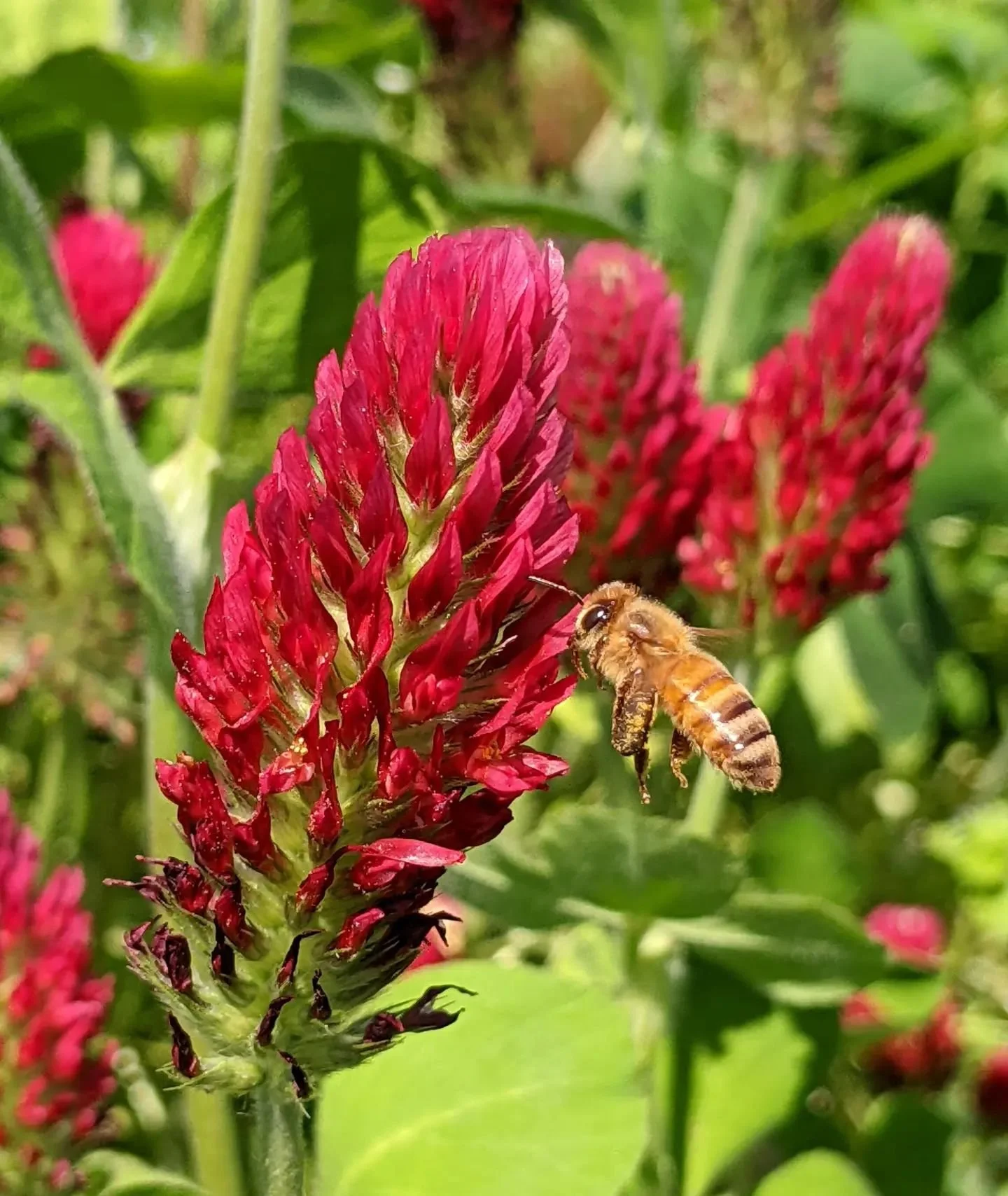Crimson Clover
No, I’m not talking about the Joan Jett and the Blackhearts cover of the Tommy James and the Shondells 1960’s hit song, but the powerhouse plant popping up and blooming all over farms right now. Crimson clover, (Trifolium incarnatum), is a flowering plant native to Europe, but cultivated throughout the world due to it’s many benefits.
The plant itself is a fast-growing knee-high annual herb that has stunning crimson cone-shaped flowers the size of your thumb that has more uses than a Leatherman tool. Some varieties have an excellent re-seeding rate meaning the plants will produce enough viable seed to germinate the following year. When I see Crimson clover growing on a farm, it’s a sign of wise resiliency and ecological investment. A twenty five pound bag of good seed will cost around $130 and plant an acre but take a look at the returns.
The news is overwhelming these days with warnings of how fast the cost of goods are rising, especially energy costs. No where does this compound as fast as in food production. After having worked in the petroleum industry, hydrocarbon consumption fuels most of my decisions, especially when it comes to farming. As of this year, fertilizer costs have risen 200%. Considering the United States imports almost two and a half billion dollars of fertilizer annually from two countries currently at war with each other, the possibilities of shortages will drive costs even higher.
However, as a farmer, I have a choice. I can go down to the local grain elevator or co-op and purchase a nitrogen-based fertilizer whose cost depends on the price of natural gas and apply it to the fields using a tractor which also uses diesel fuel and motor oil OR I can purchase a bag of Crimson clover seed that can be applied to the fields that will provide the bio-available nitrogen needed for the companion crops to utilize. Clover is a legume which means it has the capacity to produce nitrogen in the nodules that form on the roots, which contain Rhizobium bacteria. These bacteria take nitrogen from the air and convert it into a form the plants can use. Mother Nature does all the heavy lifting single-handedly as opposed to the thousands of people it takes to get hydrocarbons out of the ground and convert them to nitrogen via chemical processes that contribute to greenhouse gases.
That’s just the tip of the flower, though.
Crimson clover is an excellent cover crop which are plants that are planted to cover the soil rather than the harvested crop. Cover crops, also referred to as green manure, decrease soil erosion, weeds, pests, and diseases while increasing soil fertility, soil quality, water, biodiversity, and wildlife. Multiple crops for harvest such as sorghum, corn and potatoes can be planted using no-till methods into Crimson clover, again, reducing the use of agricultural equipment for ploughing and applying various chemicals such as herbicides, pesticides, and fungicides. Tractors can guzzle as much as 8 gallons of diesel an hour.
Again, this is the farmer’s choice. They can plant rows of Crimson clover to combat thrip infestations (nasty little bugs that suck the juices out of plants) by housing predatory mites or go down to the greenhouse supply store and spend several hundred dollars on a few gallons of something that needs a warning label, certification, licensing, and PPE to apply.
Speaking of beneficial insects, those brilliant flowers are full of nectar that attracts pollinators. 71% of the crops we eat require pollinators to produce. Feeding the bees is a good thing. And if you’re feeding honeybees, you’re going to get great honey out of the deal, too.
The sad truth is that there are many farmers out there who would rather beat nature into submission through mechanical and chemical means. Sometimes they’re our neighbors. One of the biggest issues Certified Organic farmers have to deal with when faced with nearby conventional farms is the prospect of chemical drift which happens when prohibited substances make their way on to organic farms via air and/or water. The University of Michigan found that buffer zones of Crimson clover reduced runoff contamination from common herbicides nearly 100%.
We have all these wonderful advantages of Crimson clover and haven’t even gotten to the good stuff—it can be eaten by both livestock and humans. As a crop, Crimson clover can be grazed by livestock or baled into hay. Farmers don’t have a monopoly on growing Crimson clover by the acre as smaller amounts of seeds can be purchased and planted in your home gardens. Both flowers and leaves can be eaten cooked or raw. Similarly, the flowers can be brewed into tea fresh or dried.
If all that is not enough to convince you of Crimson clover’s value, simply cut a handful of stems, put them in a vase and make your world a bit more beautiful.

